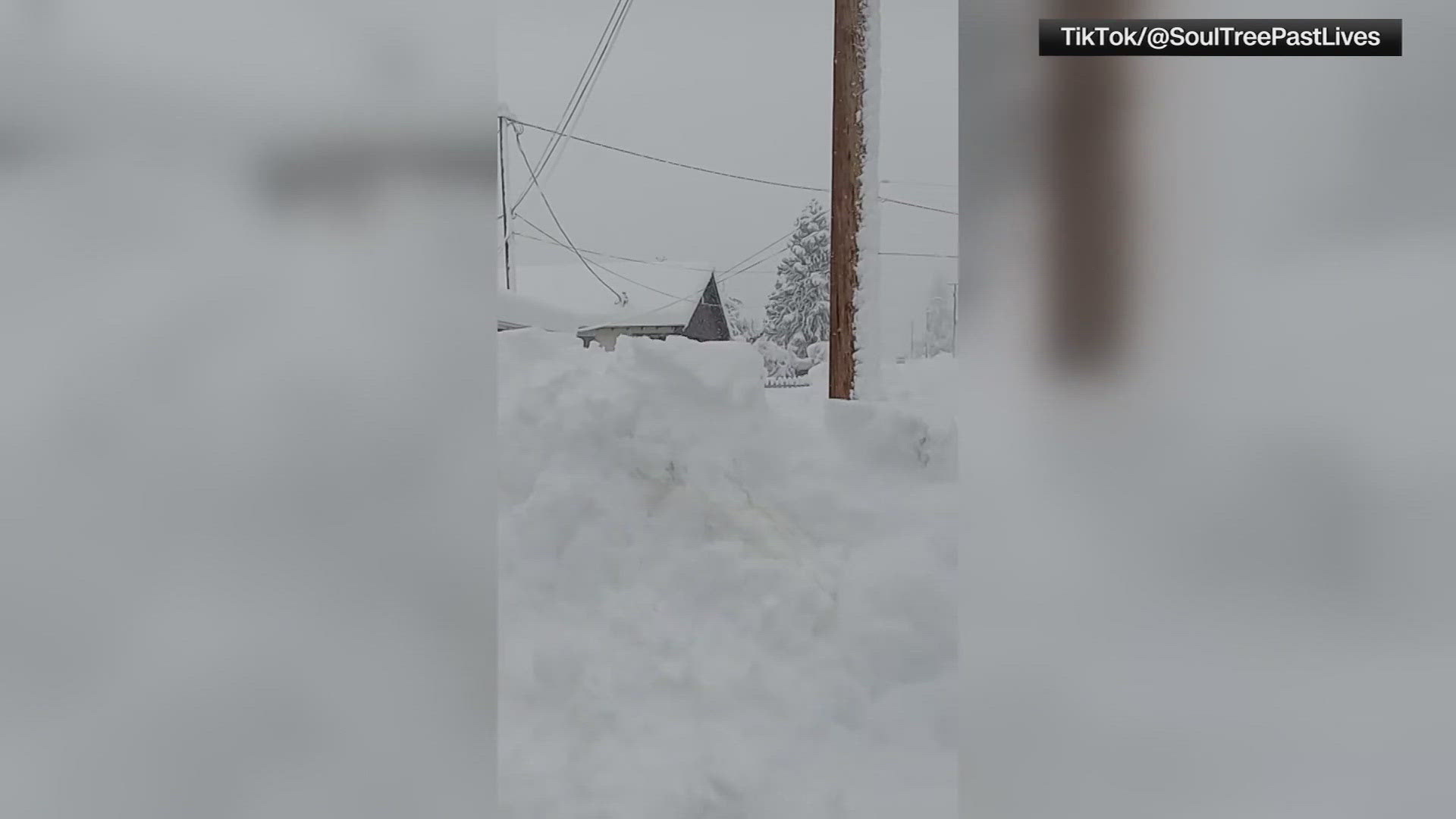Bomb cyclone, an eye-catching weather term, often makes headlines during the winter months.
The powerful storms are known to bring extreme cold, heavy snow and intense winds to areas throughout the U.S.
VERIFY is answering four top questions about bomb cyclones, including how they form and why they are different from hurricanes.
THE SOURCES
- National Oceanic and Atmospheric Administration (NOAA)
- Greg Carbin, chief of forecast operations for the NOAA/NWS Weather Prediction Center
- Jennifer Francis, Ph.D., senior scientist with the Woodwell Climate Research Center
WHAT WE FOUND
What is a ‘bomb cyclone’?
A bomb cyclone is a storm that “intensifies very rapidly,” Jennifer Francis, Ph.D., senior scientist with the Woodwell Climate Research Center, told VERIFY.
This type of storm is created by a process known as bombogenesis, which occurs when atmospheric pressure at the center of the storm drops quickly – specifically, one millibar or more per hour over a 24-hour period.
A bomb cyclone can bring dangers such as strong winds, heavy precipitation in the form of rain and snow, and coastal flooding to impacted areas, Greg Carbin, a meteorologist with the National Weather Service, told VERIFY.
The combination of snow with these strong winds can lead to blizzard conditions, shutting down airports and roads, Francis added.
More from VERIFY: Yes, leaving faucets dripping during freezing weather can help prevent pipes from bursting
How do bomb cyclones form?
Bomb cyclones, as is the case with other storms, form due to contrasting air masses – one that’s very cold combined with another that’s very warm.
The storms also get energy from disturbances in the jet stream, a narrow band of strong wind in the upper level of the atmosphere.
How do bomb cyclones differ from hurricanes?
You’ve probably heard the word cyclone used before in reference to hurricanes. But a bomb cyclone and a hurricane aren’t the same thing.
The differences lie in how the storms form and where they derive their energy, Francis explained.
Bomb cyclones form in areas outside of the tropics, driven by air masses of different temperatures colliding and jet stream disturbances.
Hurricanes, on the other hand, form at low latitudes in the tropics. The formation of a hurricane is complicated, but it essentially depends on three factors: warm water of at least 80 degrees, moist air and converging winds, NOAA explains.
When warm water evaporates from the ocean and condenses to make clouds, it releases a lot of heat into the atmosphere. That heat is what drives a hurricane, Francis explained.
“The temperatures are the same, there’s lots of humidity, lots of moisture in the air, the ocean is very warm. They [hurricanes] only form over oceans, whereas the other kinds of storms form over land and ocean,” she said.
Is climate change leading to more severe storms like bomb cyclones?
Climate change also impacts the development of bomb cyclones and other severe storms “in a number of very direct ways,” Francis, whose expertise lies in arctic weather and climate, said.
“One is that the oceans are warming very steadily because of our increased emissions of greenhouse gases into the atmosphere,” she said. “That extra warming in the oceans is increasing that contrast between that very cold arctic air coming down and the warm, moist air that’s feeding the air mass to the east of that arctic air.”
Additionally, warming of the air and oceans leads to an increase in evaporation, meaning there is more water vapor in the atmosphere, Francis said.
That water vapor condenses into clouds, releases heat and adds energy to storms, similar to what happens with a hurricane. It also provides more moisture to fuel the storm, Francis said.
“We’re seeing a major uptick in the frequency of heavy precipitation events, and this is certainly connected to this increase in water vapor that’s in the atmosphere as a result of the warming oceans and air,” she added.
Jonathan Overpeck, Ph.D., a climate scientist and professor at the University of Michigan, also says major winter storms like bomb cyclones are becoming “more likely and more destructive” due to climate change.

